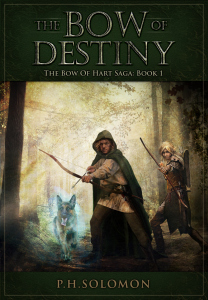Deep POV Pt. 8: How to Use Internalization
 This is an ongoing series about using the writing technique – deep point of view. The original posts began over last summer after I attended a webinar on the subject. Previous are listed at the end of this post.
This is an ongoing series about using the writing technique – deep point of view. The original posts began over last summer after I attended a webinar on the subject. Previous are listed at the end of this post.
Deep POV is an effective technique to enhance characterization. The effect is that the reader is closer to the story so that they feel more part of the action. Lots of description about the actions of characters and the setting creates a distance for the reader. Of course, this technique can be used in varying degrees withing your book. Also, there are aspects of deep POV that require different handling in your writing. Here are a few concepts to consider when using internalization with this writing style.
Ease into the main character’s POV.
It’s jarring for the reader to be dropped directly into the point of view at the beginning of a book or a scene. Instead of jumping right into deep internalization try using a movie technique instead: start from a distant perspective and pan into deep POV and accompanying internalization. Likewise, when you write an action/fight scene let there be distance – characters are reacting rather than thinking. Additionally during action, emotions are bursts of shouts or wordless utterances. So deep POV can be varied depending on place and activity in your book.
Internal dialogue is not continual.
In deep POV internal dialogue is not long strings, or a continual thread of, the main character’s constant thoughts about any and everything. Boring. Instead focus on what’s important to the character and plot during the scene. There should be a mix of external action, regular dialogue and description. In this sense, internalization is more like adding seasoning to the story from the main character’s POV.
 How does internal dialogue appear?
How does internal dialogue appear?
Simply increasing the number of italicized, active thinking by the main character is not actually deep POV internalization. Instead this style is woven into the narrative such that thought and action by the main character are vary. Italics should be limited only to exclamations and colloquialisms. So verbatim, italicized thoughts should be avoided.
Internal dialogue should be the same tense.
If working in third person deep POV, avoid use of first person references in the POV character’s internalization. This creates a jarring distance for the reader.
What it becomes?
Coupled with the use of dialogue and various other elements, internalization acts as an emotive modifier to the character’s POV.
Here are previous posts based on deep POV that may help:
3 Tips for Editing to Deep POV PT 1
Deep POV Tips Part 2
Deep POV Tips Part 3
Deep POV Tips Part 4: Of Sneaks and Shallow POV
Deep POV Tips Pt. 5: Eliminate Narrative Distance
Deep POV Pt. 6: Editing for Emotion
And of course here are more resources for deep POV and showing emotion rather than telling:
Rivet Your Readers with Deep Point of View
The Emotion Thesaurus
 Have you used deep POV? What techniques have you found helpful? Please share your thoughts and ideas in the comments section. I’d also love to connect with you over social media so check my Contact page for that information. See the News page for announcements and remember to sign-up to receive news and posts by email. I’ve added a new sign-up tab on my FaceBook page to simplify the process. New followers can download The Black Bag via free coupon today! Also, the cover of my book, The Bow of Destiny, was revealed recently so take a look.
Have you used deep POV? What techniques have you found helpful? Please share your thoughts and ideas in the comments section. I’d also love to connect with you over social media so check my Contact page for that information. See the News page for announcements and remember to sign-up to receive news and posts by email. I’ve added a new sign-up tab on my FaceBook page to simplify the process. New followers can download The Black Bag via free coupon today! Also, the cover of my book, The Bow of Destiny, was revealed recently so take a look.
Follow Blog via Email
Enter your email address to follow this blog and receive notifications of new posts by email.
Clip art licensed from Microsoft Office.
Cover art provided on commission from Chris Rawlins
Filed under: Blogging, Cover Reveal, Creativity, Deep POV, Editing, Indie Publishing, Self-publishing, Social Media, The Black Bag, The Bow of Destiny, Tips, Twitter, Writing Tagged: blogging, Coverart, creativity, Deep POV, Editing, Facebook, Indie Publishing, P. H. Solomon, Self-publishing, Social Media, The Black Bag, The Bow of Destiny, Tips, Twitter, writing




